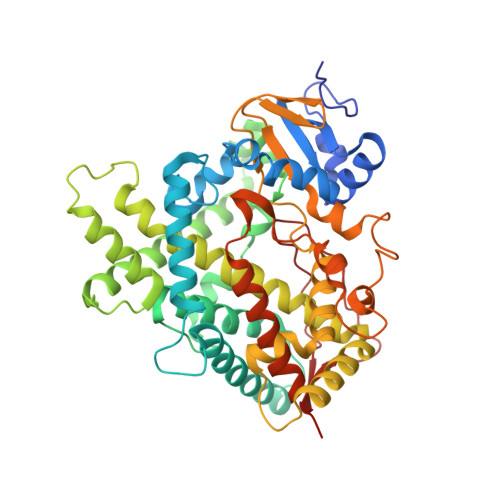Human Cytochrome P450 1A1 Structure and Utility in Understanding Drug and Xenobiotic Metabolism.
Walsh, A.A., Szklarz, G.D., Scott, E.E.(2013) J Biol Chem 288: 12932-12943
- PubMed: 23508959
- DOI: https://doi.org/10.1074/jbc.M113.452953
- Primary Citation of Related Structures:
4I8V - PubMed Abstract:
Cytochrome P450 (CYP) 1A1 is an extrahepatic monooxygenase involved in the metabolism of endogenous substrates and drugs, as well as the activation of certain toxins and environmental pollutants. CYP1A1 is particularly well known for its ability to biotransform polycyclic aromatic hydrocarbons, such as benzo[a]pyrene in tobacco smoke, into carcinogens. CYP1A1 possesses functional similarities and differences with human CYP1A2 and CYP1B1 enzymes, but the structural basis for this has been unclear. We determined a 2.6 Å structure of human CYP1A1 with the inhibitor α-naphthoflavone. α-Naphthoflavone binds within an enclosed active site, with the planar benzochromen-4-one core packed flat against the I helix that composes one wall of the active site, and the 2-phenyl substituent oriented toward the catalytic heme iron. Comparisons with previously determined structures of the related cytochrome P450 1A2 and 1B1 enzymes reveal distinct features among the active sites that may underlie the functional variability of these enzymes. Finally, docking studies probed the ability of CYP1A structures to assist in understanding their known in vitro interactions with several typical substrates and inhibitors.
Organizational Affiliation:
Department of Medicinal Chemistry, The University of Kansas, Lawrence, Kansas 66045, USA.

















